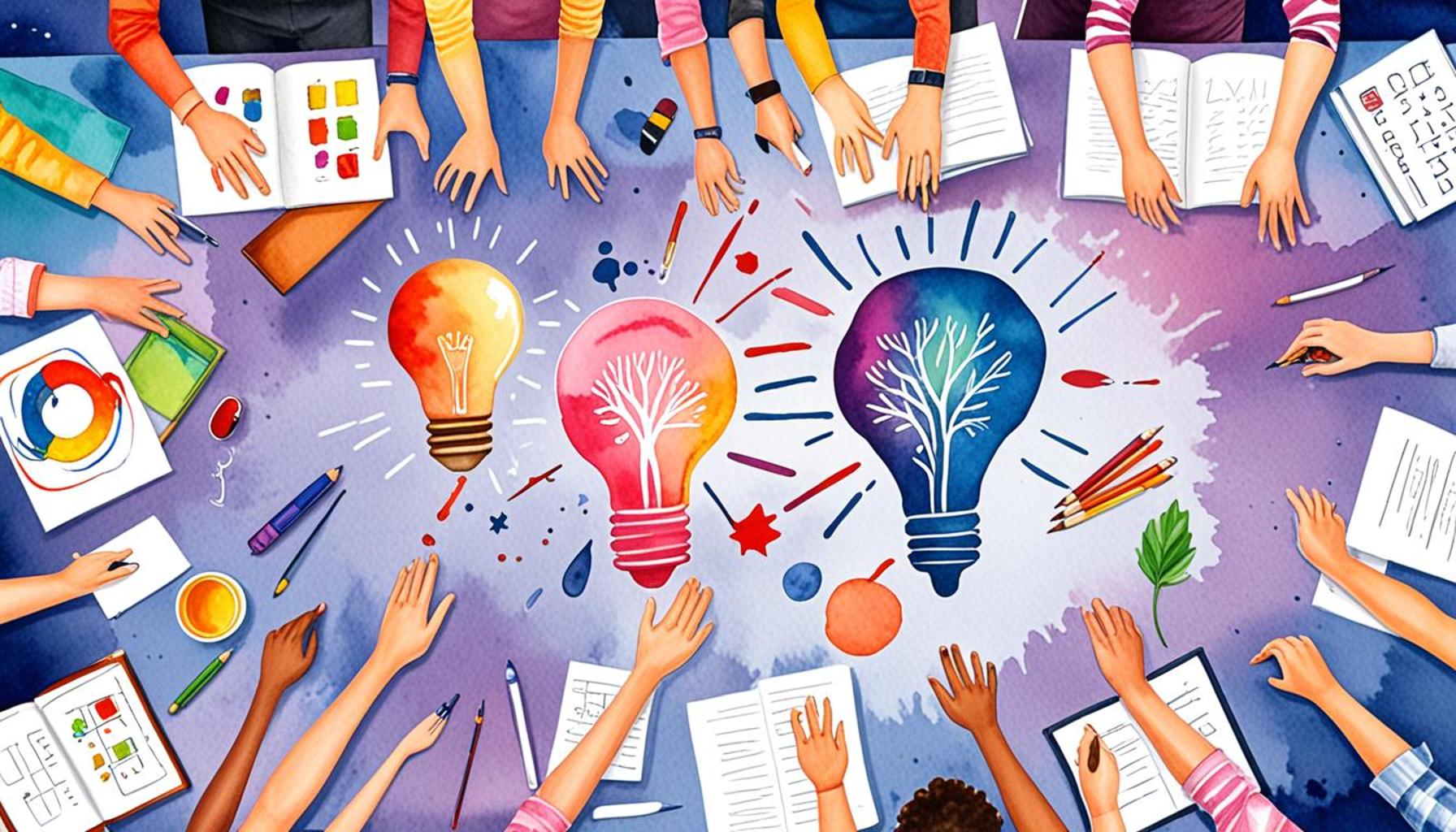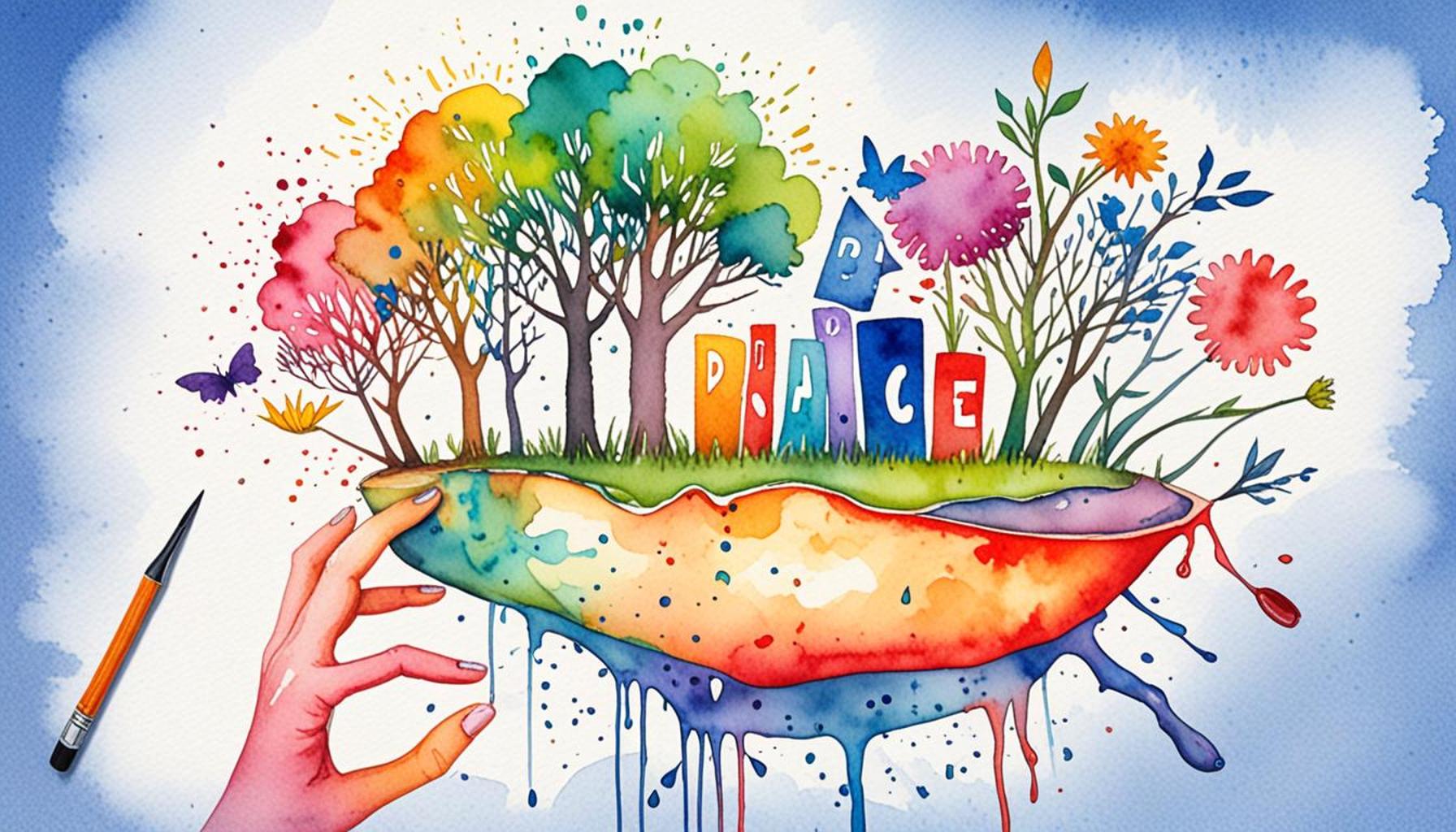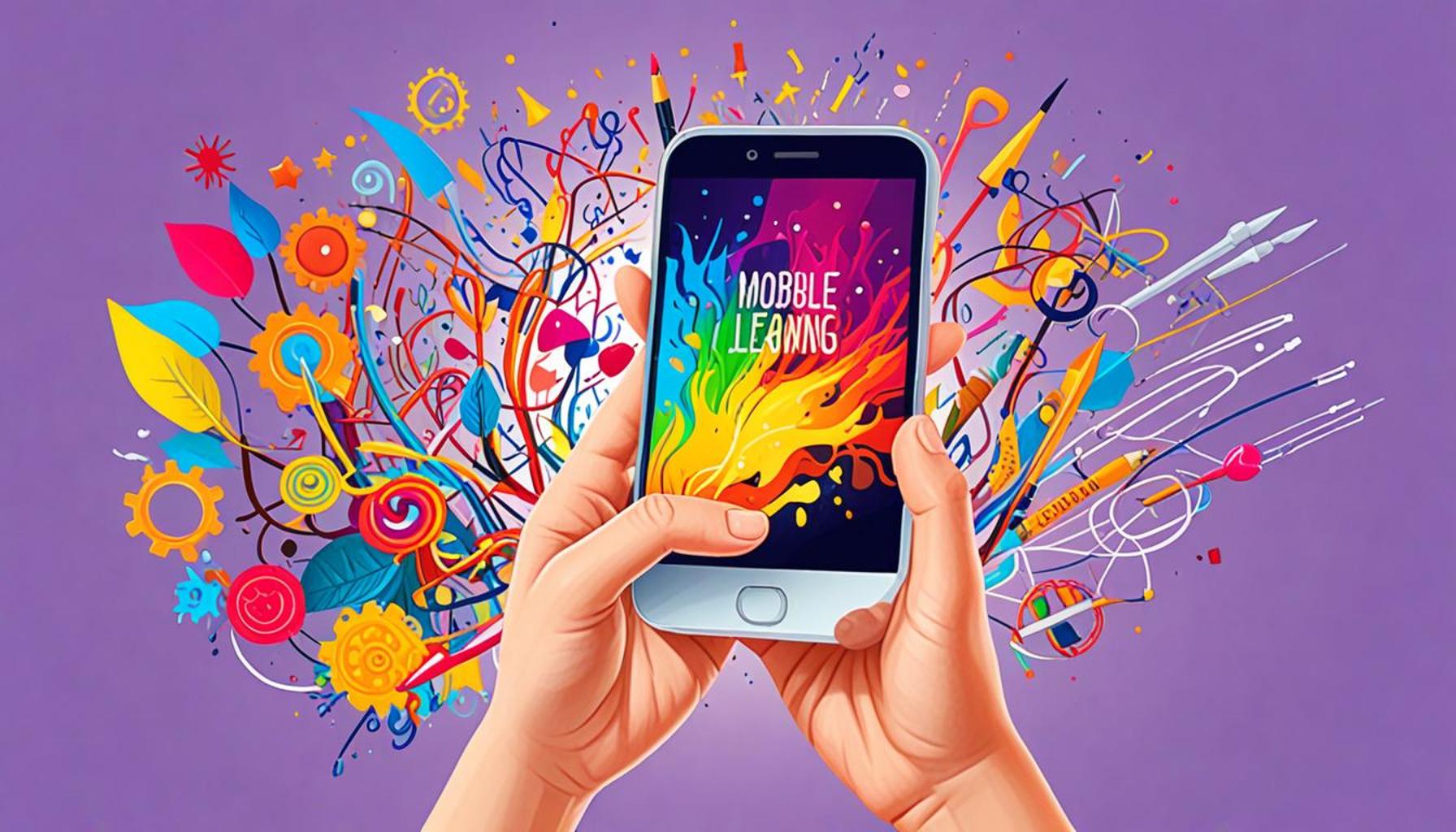Collaborative Learning Techniques Boost Students Growth Mindset

Unlocking Potential Through Collaboration
In today’s rapidly evolving educational landscape, the concept of a growth mindset has gained prominence as a key factor in fostering resilience and adaptability among students. Central to developing this mindset is the use of collaborative learning techniques. These methods not only enhance academic performance but also encourage essential life skills such as teamwork, communication, and problem-solving.
Understanding how collaborative learning influences student attitudes is crucial. Here are some reasons why it matters:
- Enhances Engagement: Collaborative tasks motivate students to participate actively.
- Promotes Peer Support: Students gain confidence by learning from one another.
- Fosters Critical Thinking: Group discussions challenge ideas, leading to deeper understanding.
This article will explore the top 5 collaborative learning techniques that effectively contribute to cultivating a growth mindset in students. Prepare to discover innovative strategies that can transform both teaching and learning experiences!
SEE ALSO: Click here to read another article
Top 5 Collaborative Learning Techniques and Their Impact on Students’ Growth Mindset
Welcome to our intriguing exploration of collaborative learning techniques and how they enhance the growth mindset of students. As education evolves, the importance of methodologies that foster teamwork and personal development has come to the forefront. Here, we will delve into five key techniques that not only encourage collaboration but also instill a robust growth mindset, empowering students to believe in their capabilities. Let’s count down from five to one and discover these transformative methods!

5. Peer Teaching
Peer teaching is a powerful pedagogical technique that positions students in the role of a teacher, enabling them to assist fellow classmates in grasping complex concepts or skills. This method not only reinforces the curriculum for those teaching but also presents information from diverse perspectives for those learning. The beauty of peer teaching lies in its reciprocal benefits: both the teacher and the learner stand to gain profound insights, deepening their understanding and motivation to learn.
Implementing peer teaching effectively cultivates an educational environment where students develop essential skills in critical thinking and communication. As students take on the educator’s role, they are compelled to organize their knowledge logically and deliver it clearly, which inevitably strengthens their comprehension and self-esteem. Moreover, peer teaching instills the belief that intelligence can be developed through dedication and persistent effort. When students explain and discuss ideas with peers, they come to recognize that mastery of even the most challenging topics is attainable with perseverance.
- Promotes active engagement: Peer teaching encourages students to actively participate in their learning process rather than passively ingesting information.
- Boosts confidence: Both the peer teacher and the learner experience an increase in confidence and a sense of personal growth, key components of a growth mindset.
- Cultivates a positive learning environment: This method fosters collaboration and mutual respect, as students learn to value each other’s insights and contributions.
4. Collaborative Projects
Engaging students in collaborative projects provides a dynamic platform for teamwork, often tackling assignments that emphasize real-world problems. This approach leverages shared effort and diverse skills, making it an enriching learning experience that accommodates various learning styles and methodological approaches. Collaborative projects serve as incubators for creativity and innovation, relying heavily on students’ ability to work together harmoniously and productively.
Through collaborative projects, students gain firsthand experience in the importance of division of labor and reliability. They learn to appreciate and depend on each other’s contributions, understanding that every member’s role is significant to the project’s success. This collective pursuit of objectives not only solidifies academic concepts but also profoundly impacts students’ growth mindsets. By recognizing and valuing each team member’s input, students internalize the message that communal success is often more attainable and rewarding than individual achievement alone. This understanding nurtures a mindset open to learning from others, appreciating diversity, and striving for communal progress.
3. Discussion Circles
Discussion circles are a versatile learning strategy offering a structured yet open environment where each student can voice their ideas and opinions freely. This setup ensures inclusivity, respect, and equal opportunity for all students to contribute to group discussions, effectively democratizing the classroom.
Participation in these discussion circles enriches students by exposing them to a multitude of perspectives, vital for developing empathy and critical thinking. By listening to and analyzing different viewpoints, students learn to articulate their thoughts more clearly, fostering a deeper understanding of the topics at hand. In such environments, mistakes are seen as learning opportunities rather than setbacks. This shift in perspective encourages students to take intellectual risks without the fear of failure, a key component in fostering a growth mindset.
- Encourages critical thinking: Discussion circles challenge students to evaluate and synthesize diverse thoughts, honing their analytical skills.
- Validates emotions and experiences: Every participant’s input is acknowledged and respected, reinforcing their sense of belonging and value.
- Builds community: These interactions strengthen interpersonal bonds, creating a cohesive, supportive learning community.
2. Team-Based Learning
Team-Based Learning (TBL) engages students in small, interactive groups focusing on tasks that necessitate collaboration for successful outcomes. This technique thrives on accountability; each student’s performance is integral to the group’s overall success. In TBL, tasks require collective problem-solving and decision-making, encouraging a deeper engagement with the material.
Team-Based Learning instills a spirit of collaboration, compelling students to recognize and utilize each member’s unique talents and strengths. It solidifies the connection between effort and improvement by emphasizing teamwork and shared responsibility. Through their interdependent roles, students cultivate an appreciation for peer feedback and encouragement, factors critical in fortifying their belief in personal and group potential.
1. Flipped Classroom
Ranked at the top of our list is the flipped classroom technique, a method that transforms traditional classroom dynamics by reversing conventional learning approaches. In this model, students first encounter new material at home, often through video lectures or curated reading materials, and then apply this knowledge through collaborative activities during class sessions.
Flipped classrooms significantly enhance active participation and ensure a more interactive and engaging learning experience. By allocating introduction to new content as homework, class time becomes a hub for inquiry and collaboration. This shift encourages students to come prepared, participating in teams to tackle real-world problems and discussions. As students take ownership of their learning process, they are continually encouraged to delve deeper and engage more thoughtfully, reinforcing the notion that persistent effort and focused engagement are the cornerstones of mastery and improvement.
In conclusion, by embracing these innovative collaborative learning techniques, educators can profoundly influence students’ perceptions of their capabilities and potential. These methods promote a culture of trust, shared learning, and resilience, vital for nurturing a robust growth mindset among students. By applying these strategies, educational institutions can empower a generation of learners who are not only well-equipped with academic knowledge but also imbued with the belief that with hard work and dedication, anything is possible.
| Category | Description |
|---|---|
| Active Engagement | Collaborative learning fosters active participation from students, prompting them to take ownership of their education. By working in teams, they become more invested in the learning process. |
| Improved Communication Skills | Students develop essential communication skills through discussion, debate, and the exchange of ideas. This skillset is critical not only in academics but also in the workforce, preparing students for future collaboration. |
| Diverse Perspectives | Working in diverse groups allows students to encounter multiple viewpoints, enhancing their critical thinking. Exposure to different backgrounds and opinions fosters a more inclusive mindset, pivotal for personal growth. |
| Development of Social Skills | Through collaborative tasks, students refine their social skills such as conflict resolution, empathy, and teamwork. These interpersonal skills are increasingly vital in both personal and professional spheres. |
The implementation of collaborative learning techniques is transforming the educational landscape, where students are not merely recipients of information but active participants in their knowledge acquisition. One of the most significant advantages of this method is the promotion of active engagement. When students are placed in collaborative settings, they are encouraged to contribute actively, which leads to a deeper understanding of the material and a greater retention of knowledge. Moreover, as they engage with their peers, communication skills are sharpened. Students must articulate their ideas clearly and listen to others, leading to refined conversational abilities that are indispensable in today’s diverse work environments. The collaborative process also paves the way for exposure to diverse perspectives, enriching students’ learning experiences. This amalgamation of thoughts and ideas cultivates critical thinking, as they learn to negotiate and integrate various viewpoints into their own understanding. Additionally, involvement in group activities significantly enhances a student’s social skills. The dynamics of working closely with others necessitate learning to manage conflicts, negotiate solutions, and collaborate towards a common goal—all of which are crucial for future success. Collaborative learning thus not only enhances cognitive skills but also molds students into well-rounded individuals poised for a changing world. Exploring these techniques reveals that the impact extends beyond the classroom, playing a crucial role in shaping a growth mindset that encourages lifelong learning and adaptability in increasingly complex environments.
SEE ALSO: Click here to read another article
Frequently Asked Questions on Collaborative Learning Techniques and Their Impact on Students’ Growth Mindset
What are collaborative learning techniques?
Collaborative learning techniques are educational strategies where students work together to achieve a common goal. This approach contrasts with competitive or individualistic learning, placing emphasis on teamwork, communication, and problem-solving skills. Techniques such as group discussions, peer teaching, and think-pair-share activities encourage students to engage with one another, promoting deeper understanding and retention of the subject matter.
How do these techniques impact a student’s growth mindset?
A student’s growth mindset—the belief that abilities and intelligence can be developed with time and effort—can be significantly influenced by collaborative learning. When students engage in such environments, they witness firsthand the process of tackling challenges together. This exposure fosters the understanding that mistakes are a natural part of learning and that perseverance leads to improvement. Thus, collaborative techniques not only enhance academic performance but also nurture a mindset open to continuous learning and personal development.
What are some examples of successful implementation of collaborative learning in classrooms?
Educational institutions around the globe have successfully implemented collaborative learning techniques. For instance, the use of Project-Based Learning (PBL) in science classes helps students collaboratively tackle real-world problems, integrating knowledge across disciplines. Another example is the jigsaw method, where each student becomes an expert in one part of a topic and then teaches it to group members, ensuring comprehensive understanding and participation. These methods have proven effective in fostering both academic achievement and social skills.
Are there any challenges associated with collaborative learning?
While collaborative learning offers numerous benefits, it comes with certain challenges. One major issue is uneven participation, where some students may dominate the conversation while others remain passive. Additionally, assessing individual contributions can be difficult, which might affect grading fairness. Educators need to implement structures and guidelines to ensure equitable participation and effective teamwork. Training in conflict resolution and leadership skills can also help in mitigating these challenges.
RECOMMENDED: Check out this similar article
Conclusion: The Power of Collaborative Learning Techniques
As we have explored, collaborative learning techniques play a pivotal role in shaping students’ growth mindsets. By fostering an environment of cooperation and mutual respect, these techniques encourage students to view challenges as opportunities for growth rather than as insurmountable obstacles. This shift in perception is essential for nurturing resilience and adaptability in the ever-evolving academic landscape.
Key takeaways from this discussion include the realization that collaborative learning not only enhances academic performance but also cultivates critical interpersonal skills. Techniques such as peer-led discussions, group projects, and problem-based learning encourage students to articulate their thoughts, listen actively, and consider diverse viewpoints. These skills are not only valuable in educational settings but are also crucial in the professional world, where teamwork and communication are paramount.
Moreover, the impact of growth mindset techniques is amplified through collaborative learning. When students witness their peers succeeding through effort and perseverance, they are more likely to adopt similar attitudes towards their own learning journeys. This communal growth mindset fosters a supportive learning environment where mistakes are seen as stepping stones to success rather than failures.
In conclusion, integrating collaborative learning techniques into educational practices is essential for developing a growth mindset among students. As these techniques continue to prove their effectiveness, educators and institutions are encouraged to explore and implement them more widely. The potential for academic and personal growth through collaboration is immense, promising a generation of students who are well-equipped to face future challenges with confidence and resilience.
Looking Forward
The journey does not end here. As more educators embrace these strategies, ongoing research and adaptation will be crucial in refining these methodologies. By continuing to investigate and innovate, we can create educational environments that not only educate but also empower students to thrive in all aspects of their lives.


